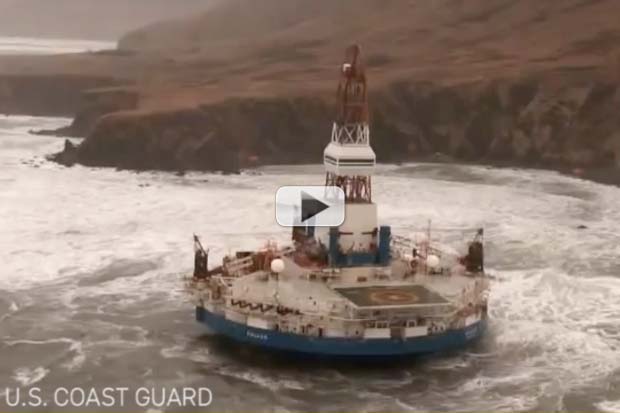
Joss Fong is a video producer and science journalist living in New York. She contributed this article to Live Science's Expert Voices: Op-Ed & Insights.
Geologists estimate that the Arctic holds more than 20 percent of the planet's oil and gas resources. Alaska's waters alone may contain 24 billion barrels of oil. That's about three-and-a-half years of U.S. oil consumption.
But even with climate change melting its sea ice, the Arctic ocean remains a pretty inhospitable place for the oil industry. Royal Dutch Shell's recent decision to cancel drilling plans for 2014 is just the latest in a long line of setbacks, underscoring the reality that easy oil is a thing of the past.
Shell purchased leases in the Beaufort Sea in 2005 and in the Chukchi Sea in 2008. Plans to begin exploratory drilling in 2010 were put on hold when the administration of President Barack Obama imposed a moratorium following the BP oil spill disaster in the Gulf. And a successful legal challenge by Alaska natives and environmental organizations prevented drilling in 2011.

When Shell did get the green light to drill in 2012, things did not go as planned. The company had promised to deploy an oil containment dome, but it collapsed during a test in Puget Sound. As a result, Shell was not permitted to drill far enough to reach any oil or gas. Instead, they were allowed to dig two preliminary "top holes."
Shortly after drilling began in the Chukchi Sea in September of that year, Shell had to halt operations for two weeks to dodge a large ice floe. In the Beaufort Sea, an area that lies on the migratory route of bowhead whales, Shell agreed to postpone drilling to yield to subsistence hunters.
When the ice returned and the drilling season ended, one of Shell's drilling rigs caught fire in the engine room and was cited by the U.S. Coast Guard for safety violations. The other drill ship got caught in a storm and ran aground at Sitalidak Island, prompting a Coast Guard rescue mission. Due to this damage, Shell decided to forego drilling in 2013.
The U.S. Environmental Protection Agency also fined shell $1.1 million for exceeding air-pollution limits during the 2012 drilling operations, but as of November, Shell still planned to go back out this summer. Then, early this year, the 9th Circuit Court of Appeals ruled that an environmental assessment associated with the 2008 lease sale was flawed, and the oil giant threw in the towel — for now at least.
The wells that Shell was trying to dig were exploratory — any discovered oil wouldn't start flowing until a decade later. For Shell and other oil companies staking claims in the Arctic, that investment will be worthwhile if oil prices remain high and consumers remain heavily dependent on the fuel. However, the less oil people use, whether by improving efficiency or finding alternatives, the less Shell will be inclined to chase down every last drop at the literal ends of the earth.
The author's most recent Op-Ed was "Flow Battery Breakthrough May Boost Green Energy Storage." The views expressed are those of the author and do not necessarily reflect the views of the publisher. This version of the article was originally published on Live Science.
Sign up for the Live Science daily newsletter now
Get the world’s most fascinating discoveries delivered straight to your inbox.











